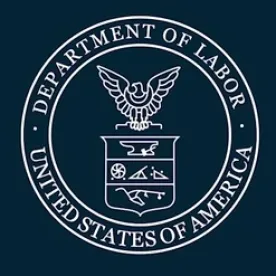For the past four-plus years, the U.S. Department of Labor (“DOL”) has actively pursued revisions to the compensation requirements for the executive, administrative, and professional exemptions to the Fair Labor Standards Act’s overtime requirement. On September 24, 2019, DOL issued its Final Rule implementing the following changes, effective January 1, 2020:
-
The new general minimum salary for these exemptions increases from the current level of $455 per week ($23,660 per year) to $684 per week ($35,568 per year).
-
The new minimum annual compensation threshold for the highly compensated employee version of these exemptions increases from $100,000 to $107,432.
-
Employers may use commissions, nondiscretionary bonuses, and other incentive compensation to satisfy up to 10% of the salary requirement, provided that these payments occur no less frequently than annually, and subject to a single “catch-up” payment within one pay period of the close of the year.
The current version of these regulations has been in place since 2004. As we have discussed in earlier posts, DOL first issued a proposal to update the regulations in July of 2015, with a Final Rule following in May of 2016. The 2016 Final Rule would have increased the salary requirement to $913 per week ($47,476 per year), raised the highly compensated employee threshold to $134,004 per year, and provided for automatic updates to these levels every three years without further notice-and-comment rulemaking. Various groups challenged the 2016 Final Rule in court, resulting in an injunction in November of 2016 barring implementation or enforcement of that rule. That litigation has been on appeal, with the appeal stayed pending further rulemaking by DOL.
In March of 2019, DOL issued a Notice of Proposed Rulemaking suggesting a revised basic salary level of $679 per week ($35,308 per year), a highly compensated employee threshold of $147,414 per year, allowing certain bonuses and other incentive compensation to satisfy up to 10% of the salary requirement, and expressing a commitment to update the regulations every four years. The Final Rule tracks the March 2019 proposal in most respects, with the general salary requirement increasing slightly in the Final Rule, the highly compensated employee threshold decreasing significantly, and the Final Rule eliminating any commitment to update the regulations on any particular timeframe in the future. As with the 2016 Final Rule and the March 2019 proposal, the 2019 Final Rule makes no changes to the duties requirements for these exemptions.
In addition, to remove any doubt in the event of litigation over the 2019 Final Rule, DOL has formally rescinded the 2016 Final Rule. This means that in the event that a judge were to enjoin or to invalidate the compensation standards specified in the new Final Rule, the regulations will revert to their 2004 version, rather than the levels set forth in the 2016 Final Rule.
The Final Rule also contains special salary levels for certain U.S. territories, and it updates the compensation requirements specific to the motion picture production industry.
Interestingly, and emblematic of how easy it is for employers to find themselves on the wrong side of the FLSA, DOL states in the Final Rule that the 10% allowance for non-discretionary bonuses and the like means that an employer can pay a minimum salary of at least $614.70 per week ($31,964.40 per year). Those numbers, however, represent 90% of a weekly salary of $684 ($35,516 per year), which is $1 per week less than the salary standard adopted in the Final Rule, likely stemming from a failure to update the math during the drafting process. The correct figures are a minimum salary of $615.60 per week ($32,011.20 per year). Being off by just 90 cents per week could result in owing an employee thousands of dollars in back overtime (or owing a class of employees millions of dollars).
DOL estimates that these changes will cause approximately 1.2 million workers who are currently exempt to become overtime-eligible if their employers do not increase their compensation to satisfy these new requirements, and that the modest increase in the highly compensated employee threshold will affect roughly 101,800 employees.
With these new standards going into effect on January 1, 2020, it is important for employers to begin their planning now to ensure compliance by the effective date. Although a number of advocacy groups have stated an intention to challenge this Final Rule in court, our expectation is that these new standards will become effective at the start of the new year.
In addition, employers must remain mindful of any requirements under state law that may affect overtime eligibility. A number of jurisdictions, for example, do not recognize the highly compensated employee concept, while some states require higher salary levels than those in the FLSA regulations.
As always, you should consult your wage and hour counsel to ensure compliance with these new regulatory requirements. It will be particularly important to think through carefully how to avoid costly errors when relying on the allowance for bonuses, commissions, and other incentive compensation.




 />i
/>i

